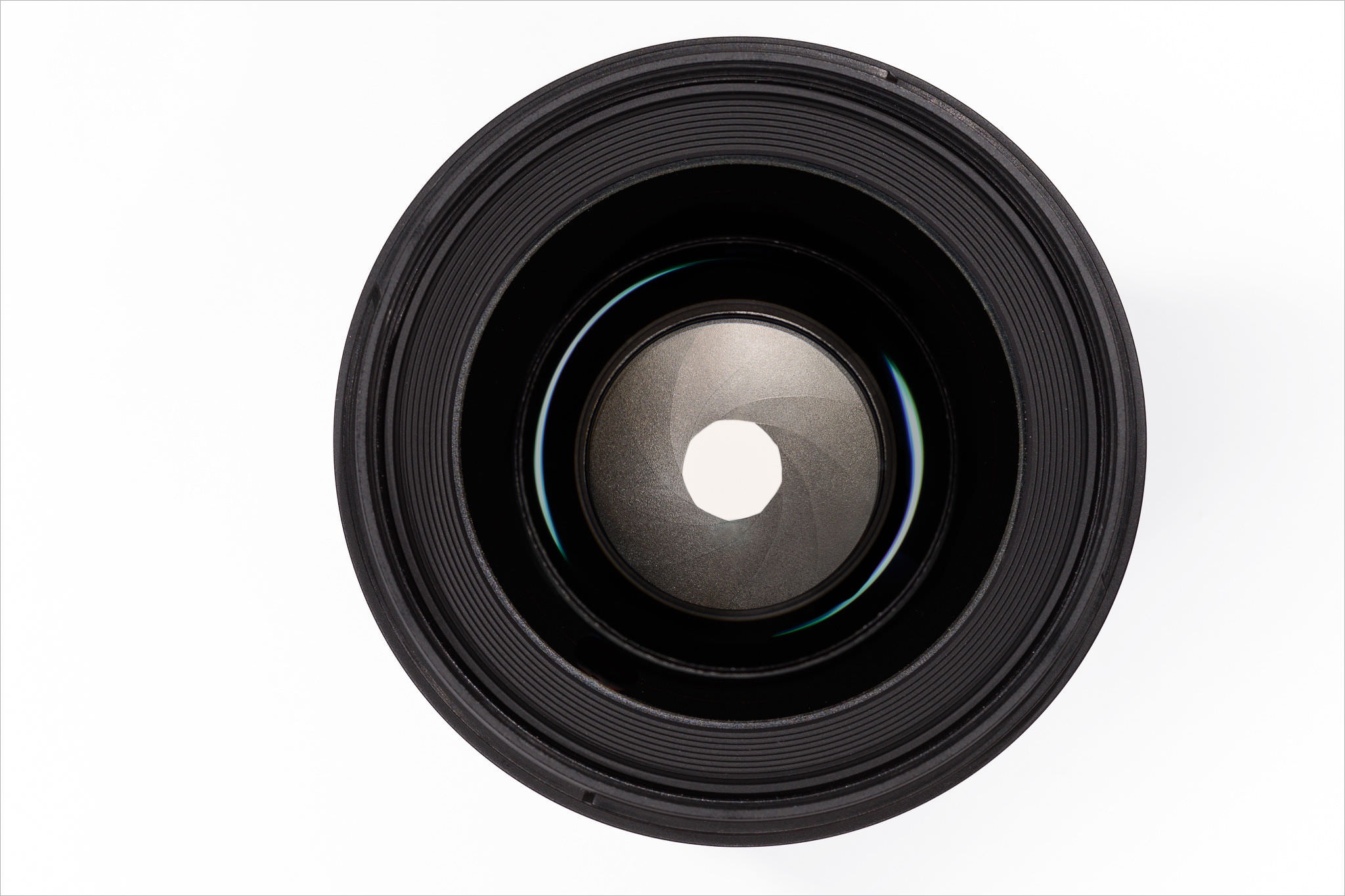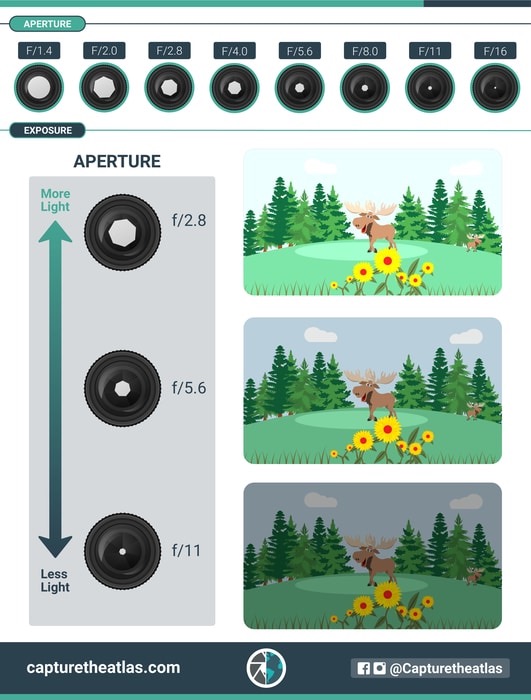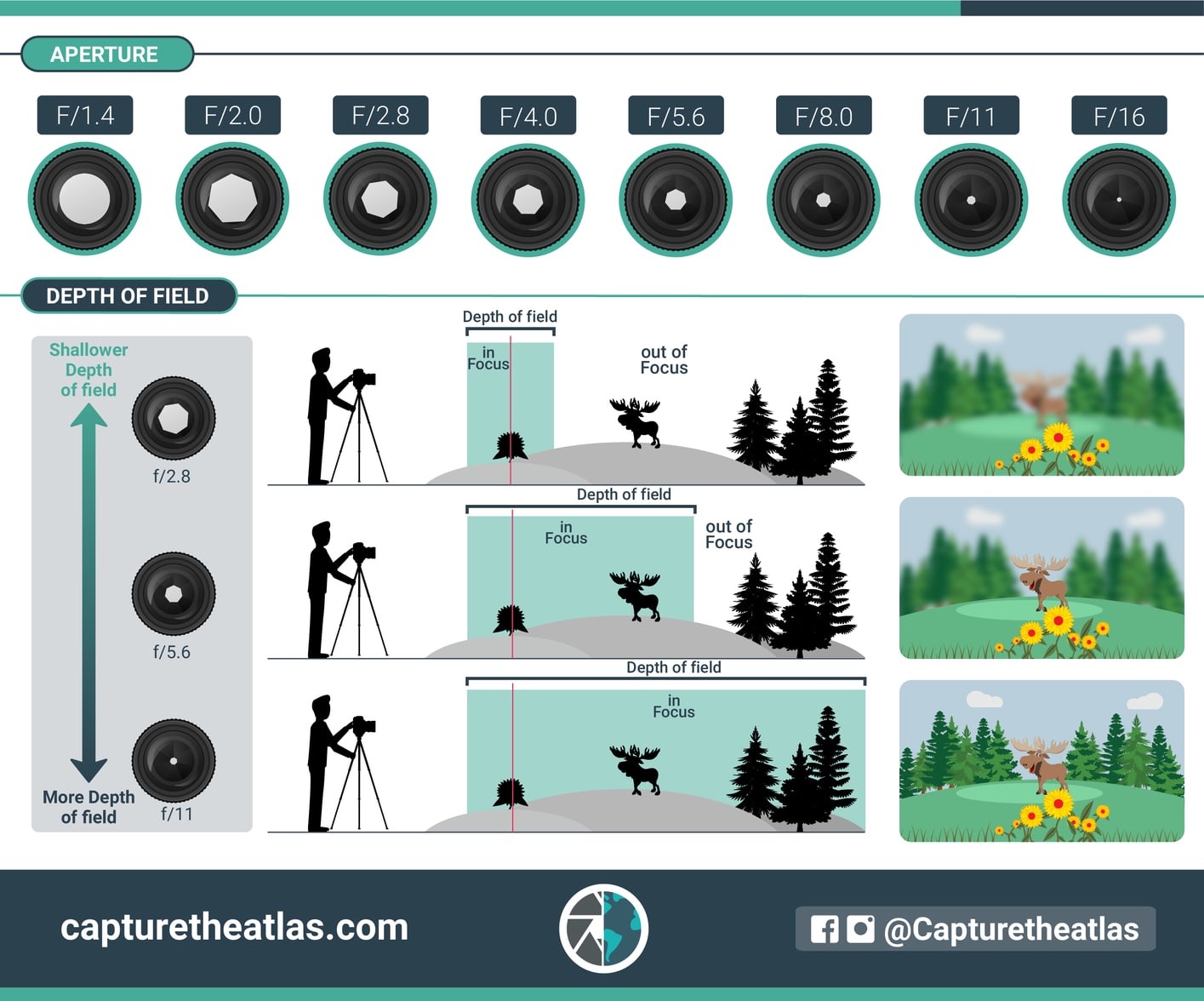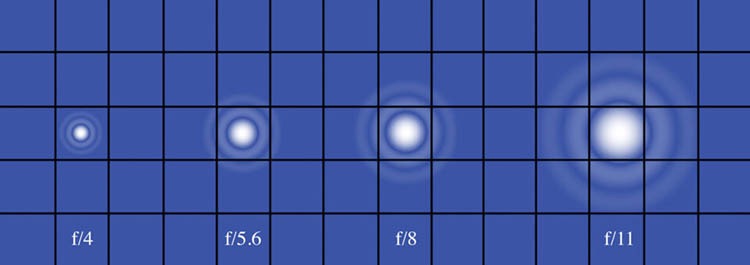Aperture
光圈(aperture) 是镜头中一个可以扩大、缩小的组件,由一圈不透明的叶片(diaphragm)组成。

当叶片打开,更多的光可以通过 光圈 达到相机传感器,当叶片关闭,更少的光能达到相机传感器。叶片打开的程度通过 光圈值 衡量。
光圈类似人眼的瞳孔,通过扩大、缩小调节进入眼底的光。
影响 曝光
光圈 最明显的影响就是曝光,或者说成像的亮度。在 ISO、快门 时间一定时,光圈越大(光圈值 越低)通过的光越多,照片越亮;光圈越小(光圈值 越高),则反之。

影响 景深
物理定律决定,当 光圈 越大,景深 就越窄,意味着图像中更多区域失焦、模糊。当 光圈 越小,景深 就越广,图像中清晰的部分就越多。
需要注意,光圈 越小,超焦距 也越短。

如何决定拍照时的 景深?一般有两条原则:
- 摄影的主体决定。比如,拍摄地形时通常使用宽景深以容纳更多的背景信息;拍摄人物时通常使用窄景深以模糊背景、强调人像。
- 个人艺术观。摄影师可以按自己意图去使用,比如用模糊前景引导观众视线到背景。
影响 锐度
摄像时使用极端光圈值往往会造成图像锐度问题,也就是我们说的“变糊”。
当使用超大光圈时,镜头将无法产生锐利的图像,因为每个叶片都尽可能打开,以捕捉更多的光线。通常而言,光圈值低于 f/5.6 后,图像丢失 锐度 效果就会很明显。
当使用超小光圈时,因为光衍射的存在,图像 锐度 也会降低。
如何找到能拍摄最锐利图像的 光圈值?
让照片最锐利的 光圈值 被称为“sweet spot”,一般而言是最大光圈移动两个 光圈值。具体情况还是需要根据镜头、CMOS 和场景去调整。
Aperture in photography is the opening of the camera lens, which is related to the amount of light that passes through the camera lens to the image sensor.
The aperture mechanism in the lens that allows more or less light to come in is formed of a series of opaque “blades” called diaphragm. When the blades are open, your camera sensor will capture more light, whereas as the blades progressively close, less light will hit your sensor.[2]
Aperture can be defined as the opening in a lens through which light passes to enter the camera. It is an easy concept to understand if you just think about how your eyes work. As you move between bright and dark environments, the iris in your eyes either expands or shrinks, controlling the size of your pupil.[3]
A large aperture (a wide opening) will pass a lot of light, resulting in a brighter photograph. A small aperture does just the opposite, making a photo darker.
In a dark environment – such as indoors or at night – you will probably want to select a large aperture to capture as much light as possible. This is the same reason why people’s pupils dilate when it starts to get dark; pupils are the aperture of our eyes.[3:1]
According to the physics laws in optics, the larger the aperture you use, the shallower depth of field you’ll be able to capture, meaning more areas of your images will be out of focus and less sharp.
Conversely, the smaller the aperture you use, the greater the depth of field you’ll see in your image, meaning a bigger proportion of the image will be in focus.
Thus, the smaller aperture you use, the shorter the hyperfocal distance will be.
The aperture and depth of field that you have to look for depend mostly on:
- The scene that you’re photographing
- Your artistic view
[2:1]
Using extreme aperture values in photography is not recommended. When you use a very large aperture, your lens can’t physically produce the sharpest results, since the diaphragm will be wide-open, trying to capture as much light as possible.
That way, as you open your aperture below f/5.6 values, you’ll be able to notice how your image loses sharpness.
The same thing happens when you set a small aperture. In that case, there is a phenomenon related to aperture in photography called diffraction, which is an optical effect that results in poorer quality throughout the image. You can see this phenomenon as you start closing the aperture above f/16 values.[2:2]
